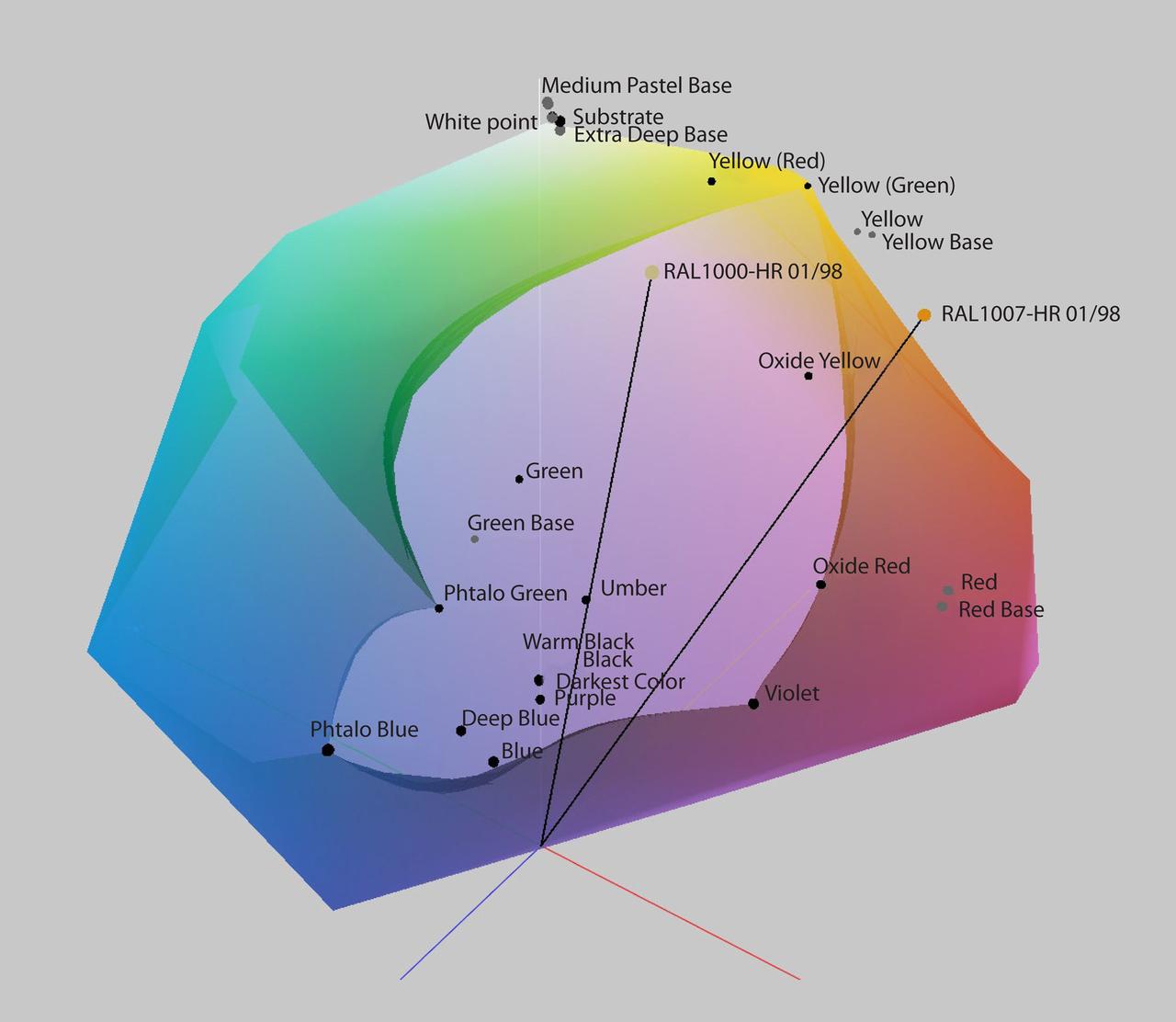Ready to proof -- CLJ 08/03/21
KJ sent corrections on 8/10
CLJ revised on 8/11
KJ sent more corrections on 8/12
CLJ revised on 8/12
Ready for author

Sustainable Color Management:
Reducing Waste While Favoring the Bottom Line
Photo courtesy of Datacolor.
Video: Muhammet Camdereli, Creatas Video, via Getty Images
By Jason Loehr, Global Product Manager, Datacolor
The paint and coatings industry sharpened its focus on sustainability in recent years as the need to mitigate climate change intensified. But when COVID-19 brought life to a standstill in 2020, the positive environmental impact of global reductions in manufacturing, travel and everyday activities expanded general awareness of sustainability’s importance and heightened the call for green initiatives. Today, as environmental regulations and consumer demand for sustainable solutions increase, industries across the board, including paint and coatings, are homing in on cost-efficient ways to help the environment.
While balancing cost and sustainability might sound challenging, digital color management makes it possible for paint and coatings professionals to help the environment while still favoring the bottom line. This is a key consideration for many in the industry who, now more than ever, are searching for innovative ways to streamline workflows and reduce waste while saving on costs.
Embracing Sustainable Solutions
Faced with increasing demand for sustainable color management, the paint and coatings industry has widely adopted digital solutions and technologies. By embracing digitalization and utilizing an accurate formulation system, paint and coatings companies are already reducing the number of adjustments required, therefore reducing waste.
Beyond the implementation of digital formulation systems, software with the ability to help recycle waste material is one of the most important digital features for sustainability in paint and coatings. When off-color materials or mistints occur, this specialized software function can “recycle” the content into future production batches, conserving valuable resources and giving new life to materials that previously would have been disposed of.
Repurposing Waste Materials
Waste-recycling software provides an eco-friendly solution to inevitable occurrences of off–color materials or material overages in paint and coatings manufacturing. For example, if you have multiple off-color products, recycling software enables you to combine them together into larger “batches of colors.” You might have a drum of gray/light colors and a drum of brown/dark colors. You can then store these batches just as you would store colorants in your database.
From there, you can use them in every future production batch you create. Your system will only add as much off-color product as it can without interfering with the target color. Think of this as “free volume” for larger batches. All the while, recycling software keeps a running inventory of the locations and available quantities of all stored materials.
This means the recycled color batches stored and recorded in your database can eventually be worked into a new desired color since any bucket of off-color material can be shaded over to the correct color by performing a combinatorial correction and adding necessary colorants to the bucket. Recycled paints can be used as a starting point for a new production batch, or as individual ingredients used to tint other batches.
Digital color management solutions further streamline this process by minimizing the guess work associated with blending recycled materials into new batches — providing formulas that reduce metamerism and cost, while still meeting all other necessary production criteria.
Cutting Costs Through Reuse
Software with the ability to recycle waste not only lowers costs associated with the production of off-color materials by giving paint and coatings professionals access to “free materials,” it also allows them to save on disposal fees. This cuts time off the ROI of color management software and reduces the amount of unused resources.
Although paint and coatings professionals can choose from any number of methods to fix off-color materials, digital color management is the most environmentally friendly and cost-effective option. By allowing manufacturers to shade over to their desired color and save off-color materials for future use, digitalization decreases the likelihood of material waste and added costs during production.
While the paint and coatings industry has become increasingly proactive in its efforts to digitize color management and reduce waste, recent government regulations surrounding environmental health and safety have accelerated the process.
Adapting to Eco-Friendly Regulations
Over the years, the industry has adapted to bans and new mandatory labeling on select raw materials known to negatively impact the environment. The removal of such materials from paint has spurred movement toward more eco-friendly natural and mineral-based pigments. Each change to the base of a paint or coating requires the reformulation of color recipes for every possible product and formula combination, which is no easy task since getting color right is a time-consuming process typically involving numerous corrections.
Thankfully, modern color management technology now offers automated formulation and matching software that streamlines the potentially wasteful color formulation and reformulation processes.
Streamlining Color Formulation
Many paint and coatings professionals are implementing automation to reduce waste by using digital color management software that maps color gamuts. Gamut mapping provides a visual representation of the color space covered, that which is not covered and all match capabilities, helping paint and coatings professionals know immediately if they cannot match their target color with their selected colorants.
Gamut mapping software makes it possible for industry professionals to find a near-perfect color match that could be achieved using less-costly pigments, decreasing the number of raw materials needed to achieve a match within a tolerance range. Furthermore, it helps them know instantly from anywhere at any time, whether color reformulation is necessary, reducing the need for physical samples.
The creation of fewer match samples also reduces waste and cuts back on global shipments, decreasing the industry’s carbon footprint while lowering production and shipping costs.

Photo courtesy of Datacolor.
Digital color formulation solutions with recycling functionality and gamut mapping capabilities are designed to benefit the environment while also ensuring cost-efficient production of quality items. Since sustainability efforts are an increasingly necessary investment, it is important that paint and coatings professionals continue implementing modern color management technologies like these, which favor both the climate and the bottom line.
For more information, visit datacolor.com.
